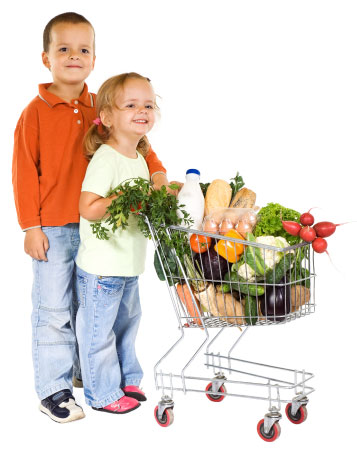Guidelines on feeding your kids at different growth stages
As your child goes through his or her growth stage, they have different emotional and physical needs. By knowing what you child needs, you can be there to help and guide them to make better choices. If you read this and think that you are too late, be assured that many parents are feeling the same way too. It is never too late to start. Your child be thankful when the enjoy the energy and vitality they gain from living healthy.
It is important to consider why healthy eating is important. It not only stabilize you child’s energy, but also sharpen their minds, and even out their moods. While peer pressure and TV commercials for junk food can make getting kids to eat well seem impossible, there are steps you can take to instill healthy eating habits without turning mealtimes into a battle zone. Here are some few pointers intended to inform and guide you along your journey towards creating the foundation for a healthy family.
Feeding a 2– to 4– year–old
As your child passes the age of 2 years, the experience of eating becomes more rewarding – and challenging. Feeding skills continue to improve, which makes mealtimes less messy. As children become more independent, they are less willing to accept the purely passive role in feeding that they had as infants. They are both more curious and more demanding of the food they eat. For parents, this provides an important opportunity to guide and educate their children in making healthy choices that will last them a lifetime.
Consistency is key
A consistent approach to feeding is usually best for children between the ages of 2 and 4 years. A variety of foods provided in three meals and two or three snacks every day will supply the energy and nutrients that you child needs to meet the demands of continued growth and weight gain.
Tips for introducing unfamiliar foods
“Try it…you'll like it,” we tell our children. Here are some tips for encouraging your children to give it a try - and for increasing the variety of food in their diet.
- Engage children in preparing new foods, for example, slicing a new fruit or vegetable or mixing tofu with marinade or sauce.
- Teach your children how to set the table.
- Show enthusiasm for new foods and sample them together. Be a good role model.
- Keep serving sizes appropriate for children, especially with a new food. A small slice or one teaspoon (5 ml) is enough to sample.
- Encourage your child to try new or unfamiliar foods in the presence of other children their age.
- Don't force children to keep trying a new food the first time they taste it. Instead, try it again at another meal. It may take several tries.
How much milk?
For 2- to 4-years olds, milk and milk product (such as cheese and yogurt) provide an adequate source of calories (energy) for growth and, in most cases, are the main source of vitamin D and calcium, both of which are essential for the normal development of bones and teeth.
Whole milk contains the highest amount of fat and calories compared to lower-fat varieties, such as 2%, 1% and skim milk, and it is this type (whole milk) to which infants are usually introduced when they make the transition from breast milk or formula to cow's milk. After the age of 2 years, however, children do not necessarily require whole milk, and can be offered the lower-fat varieties.
When milk intake is high, a child may have a diminished appetite for other foods.
It is important to recognize that consuming too much milk - for example, amounts greater than 750ml per day - can lead to a deficiency of other nutrients. When milk intake is high, a child may have a diminished appetite for other foods. This is particularly true for younger children who are still on the bottle. Children over the age of two should be given a sippy cup or regular cup instead of a bottle.
Feeding a 4– to 6– year–old
Between the ages of 4 and 6, a child's physical growth begins to slow down a little (although it probably won't seem that way!), while in rapid changes continue in skill development and feeding behaviours. It is at this stage that parents face a new set of challenges in educating their children and helping them to understand that essentials of healthy food, good nutritions and an active lifestyle.
Setting an example
Young children learn from what they see, and this is reflected by imitating the people around them. Between the ages of 4 and 6 years, they especially love to copy their moms and dads. So it is parents who need to present a model of good eating habits to their children.
By eating with your children at the table during mealtimes, you can teach them to enjoy a variety of familiar foods, as well as the experience of trying out new ones. By making mealtime a pleasant place to be for your child, you can provide positive reinforcement for learning, and thereby contribute to his or her self-esteem.

Research shows that, in recent years, children have started to develop adult-like preoccupations with weight and dieting at increasingly younger ages. Part of this is no doubt attributed to endless coverage of these issues in the media, but parents still need to ensure that they avoid contributing to the problem. Try not to complain about your weight in front of your children.
Feeding milestones for children between 4– to 6– year–old
| Age | Motor skills | Social/Personal Skills |
|---|---|---|
| 4 to 5 years | Uses knife and fork Good use of cup Good self-feeding |
Would rather talk than eat Likes to help with food preparation Interested in the nature of food and where it comes from Peer influence increasing |
| 5 to 6 years | Fully able to self-feed | Imitating Less suspicious of mixtures, but still prefers plain foods Social influence outside home increasing Food important part of special occasions |
By the age of 4 years, a child should be capable of behaving pleasantly at the dinner table. You can encourage this by making the table a pleasant and privileged lace to be. It should not be a place for punishment - for example, where children are made to stay until they finish their carrots.
Tips for packing some punch in your child's lunch
Once children reach kindergarten, many parents provide them with a bag lunch to take to school each day - usually at the last minute and without giving its contents a lot of thought. Not surprisingly, children often complain that they "don't like what mom sends for lunch" or that they are "tired of peanut butter sandwiches." Here are a few healthy and nutritious suggestions that will add variety to your child's lunch bog.
- A small ice pack (or frozen juice or water container) is ideal for keeping cold foods colds and to protect them from spoilage. Use it with milk, cheese slices, yogurt or meat sandwiches.
- Make sandwiches with a variety of fillings, such as sliced deli meats, tuna, ham, and salmon or egg salad.
- When it comes to packing fruits and vegetables, the options are endless. Cut up fresh veggies at the beginning of the week and keep them in the refrigerator for easy access and quick snacks. Carrot and celery sticks can be kept fresh in water for a couple of days. Serve veggies plain or with a low-fat yogurt-based dip.
- Try to involve your kids in selecting a variety of foods for their lunches. This will help them learn the importance of eating from different food groups - and improve the odds they will eat the lunch you packed!
- When in season, provide whole fresh fruit, including apples, pears, plums, grapes, bananas, melon pieces, mango or kiwi slices.
Feeding a 6– to 10– year–old
By the age of 6, children should have some basic knowledge of why healthy eating is important to everyone's well-being. Parents play a very large role in this education, as do teachers and caregivers.
Starting the day off right
Without a doubt, young children at this age need to start the day off with a healthy breakfast. While mornings are often rushed, this should not be at the expense of a healthy meal. Try not to fall back on the same breakfast every day. Cereal and milk can become boring. Here are some great ideas for adding variety to this fundamental meal:
- Scrambled, poached or boiled eggs with a slice of whole greain toast, bagel or English muffin
- Oatmeal with yogurt and toasted pumpkin seeds sprinkled on top
- Fresh sliced fruit, also with yogurt and seeds
- French toast, pancakes or waffles topped with fresh masked fruit or yogurt mixed with maple syrup
For more recipes, visit the Breakfast recipes page.
Drink up!
Just how much fluid do kids need every day? These recommendations for fluids for children take into account fluids from all food, drinks and water.
| Age group | Amount of fluid |
|---|---|
| 1 to 3 years | 5 cups, or 1,3 liters, per day |
| 4 - 8 years | 7 cups, or 1,7 liters per day |
| 9 to 13 years | 8½ cups, or 2.1 liters, per day for females 9½ cups, or 2.4 liters, per day for males |
Shopping for food with your kids

One great way to engage kids in the food planning – and in discovering how to combine foods so that there is lots of variety and many choices at home – is to take them shopping. Label reading can be a part of this outing.
Remember to Choose a time shopping when the children will be well rested, fed, and you will not be pressed for time. A tired, hungry child will be much more difficult to work with. If you are stressed, you are also be more likely to have problems with the trip. If possible, go on a trip to the playground beforehand.
You can also make a shopping list for your child too. With a picture-based list even a young child can stay busy checking things off. Older children can be responsible for part of the list all by themselves. A good tool for this is The trip clip
And lastly, thank your children for choosing the healthier options.
Tips for managing the evening meal
Being a working mom with two young children in this age group, meals becomes challenges on a day-to-day basis. To read more about the important of family dinners, click here. Here are some meal strategies I use.
- Organize most meals at the beginning of the week by buying groceries required
- Buy foods that are easy to prepare. For example, fresh or frozen fish cooks up quickly. Drizzle a piece of trout with a honey garlic glaze, or simply sprinkle with olive oil and lemon and bake in the oven for a few minutes. Serve with prepared rice or quinoa.
- Prepare some meals in advance and freeze them so they are ready to go when needed. Take out some homemade frozen soup, reheat and service with a whole-grain roll or fresh bagel or pita.
- Provide bottled water at home and in the car ride to the planned activity.
 >> Feeding a 2– to 4– year–old
>> Feeding a 2– to 4– year–old >> Feeding a 4– to 6– year–old
>> Feeding a 4– to 6– year–old >> Feeding a 6– to 10– year–old
>> Feeding a 6– to 10– year–old